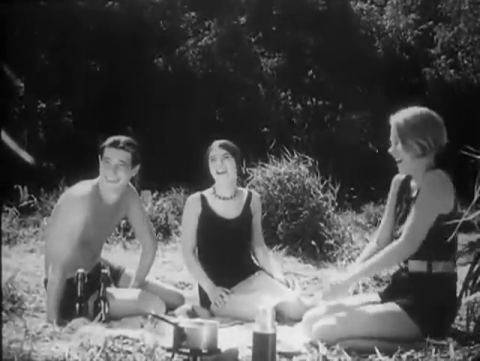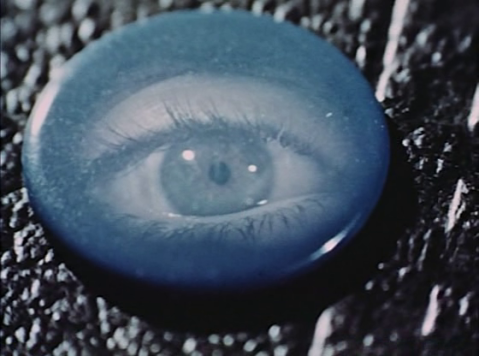If Berlin: Die Sinfonie der Großstadt is a film about the city where the people live, then Menschen am Sonntag is a film about the people that live in the city. Just like in the former film, Menschen am Sonntag shows us many street views of Berlin, but there is a big difference: Here there are practically always people in focus, rather than just rushing past. Another difference is that here we find little work or of night life, and much leisure time.
Menschen am Sonntag (People on Sunday in English) focuses on a day in the lives of four young Berliners. The titles in the beginning very carefully point out that these four are not professional actors, but that they play themselves. According to Wikipedia, this appears to be correct, although the story around them seems to be entirely fabricated. Thus, the film becomes a fascinating mix between reality and fiction. It is hard to know where the one ends and the other begins. For example, is Erwin really married to the tired and quarrelsome woman whom we find in that role? Perhaps not, but what about the apartment where they live in the film? Is that his real-life apartment? We are never told.
The plot of the film is fairly simple. Wolfgang is out walking when he comes across Christl, a pretty girl who seems to have been stood up. He buys her some coffe and invites her to join him at the recreational area Nikolassee the next day, which is a Sunday. When they meet next day, each has brought a friend, and Wolfgang is immediately taken in by Christl’s beautiful friend Brigitte. The four of them swim, eat and go for a boat ride. By and by, Wolfgang is becoming more and more intimate with Brigitte, whilst at the same time trying to keep Christl in the dark.
Except for some domestic scenes at Erwin’s apartment, that is more or less everything that happens in this very unusual film. But no more is needed.
This film is best enjoyed as a slice of life from interwar Germany, shortly before the Nazis came to power. It is an excellent complement to Berlin: Die Sinfonie der Großstadt, from about the same time, since both films focus on the same city but from very different angles.
Menschen am Sonntag
Download link
Year: 1930
Running time: 1 h 14 min
Language: German (English subtitles)
Director: Robert Siodmak, Edgar G. Ulmer
Image quality: Acceptable
Resolution: Medium (640×482)
Soundtrack: Good; synchronized with the images
Sound quality: Good
Best file format: H.264 (438 M)











